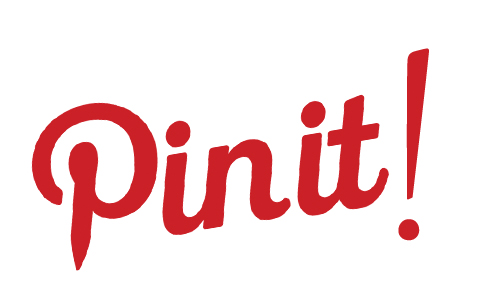
Here comes my blog post about the popular community Pinterest. You can access Pinterest on the web site: http://pinterest.com/ and by Android app or iPhone/iPad app. It´s free and easy to use but you need to create an account before you start pinning.
What is
Pinterest? You create virtual bulletin boards on Pinterest by sharing content from
the Internet to people across the world. You can create boards about any topic
like English grammar, English rhymes, English listening activities etc by
saving them on your Pinterest profile. You can later on access your content on
any computer with Internet connection. The whole idea with Pinterest is that
you pin web sites and interesting links. Then, you share the links that you pin
with other Pinterest users. The users can also repin your pins if they like
them and you can follow other users by subscribing to their boards.
You don´t need to share pins with
the whole world. You can instead create collaborative boards and invite only
pupils from your class. Then you can share documents and work together on different
projects. The invited members can comment the content in a collaborative board
and inspire each other.
Why use
Pinterest as teachers? It´s a good way to collect and organize ideas that you
get from the Internet. Here you can find inspiration and get ideas for classroom activities. You´ll find
stencils and printables and you can also get inspired by other teachers from
other countries and develop your own teaching skills.
What
should you think about when you use Pinterest? It´s important to read the Pinterest
terms before you use the site as a teacher. The must safe thing is to only pin
content you´ve created and it´s important that you ask yourself the question
who owes the content that you are publishing. Don´t forget to also check for
the PIN IT symbol on private blogs and websites. Many publishers have added these
buttons to their sites to make the readers know that it´s okay to pin their
pages to Pinterest. Read more about copy right law with Pinterest here: http://blogs.wsj.com/law/2012/03/13/dont-get-stuck-by-pinterest-lawyers-warn/


I personally use Pinterest every
day as a way to prepare for my lessons. I personally think it´s a good way to
save files instead of having to print them out ore bookmarking them. The fact
that Pinterest is a visual community also makes it easy for the user to
directly find a specific link.
Here are some interesting web
sites about Pinterest that can be interesting for you:
Happy pinning!
/Lisa Edvinsson
Thank you for yet another useful site! I have found so many starting this course I don't know where to start!
ReplyDeleteIs pinterest some what like BoxDop or iCloud or not at all? I will check it out never the less! I especially like youtube tutorials about subjects like these where I can see how it works, I am a visual learner. So thanks for sending those web sites too!
Regards
Jasmin
First of all, this was a new source that I have not encountered earlier. You begin with explaining what Pinterest is in a very clear and straightforward way. I would recommend you to use the blog’s link function instead of inserting the complete URL. The same goes with the Youtube clips, you may use the function” insert video clip” and create a more complete and attractive blog entry layout wise.
ReplyDeleteHave you thought through the green background or is it random? I wonder about the structure according to color. The structure according to the questions in bold is very easy to follow and works efficiently when navigating and browsing through your entry. Watch out for a few spelling mistakes. It is advisable to use spell check in a word processing program before publishing your entry.
I created a Pinterest account and a board, but I quite did not understand how you “Then you can share documents and work together on different projects.”. Because I think it is images and links you share not documents, isn’t it? It is obvious that the account holder functions as a filter and that the actual tagging and organizing might exclude some sources at the same time as it shares and spreads sources. It is important to be critical to the selection that the different boards offer.
Furthermore, it would be interesting if you exemplified a board that you have shared with your students and inserted an image of it in your blog. How do use Pinterest on a daily basis? You claim that, please exemplify as well. I am curious how you use it, because to me it seems somewhat messy and disorderly. One reason is the fact that you have to browse and click a lot before you actually find a more serious board that seems interesting enough to follow. There a quiet a few boards that are created by somebody who takes an interest in interior design and a few of them are basically a higgledy-piggledy of images linked to different other more or less serious sources. Information and Technology, YES, but Communication isn’t that dynamic in this media. Do you interact with your student in this media? I am hesitant to whether I wil use this source or not. I have to look into what is offers in comparison to Onenote a blog or another media.
Tell the reader of your blog what age group you teach and what subjects, because the source might be taylormade for your specific needs. You may also foresee if this source might be of use for teachers who teach other age groups and other subjects. Another aspect is that” this sight is not monitored for content”